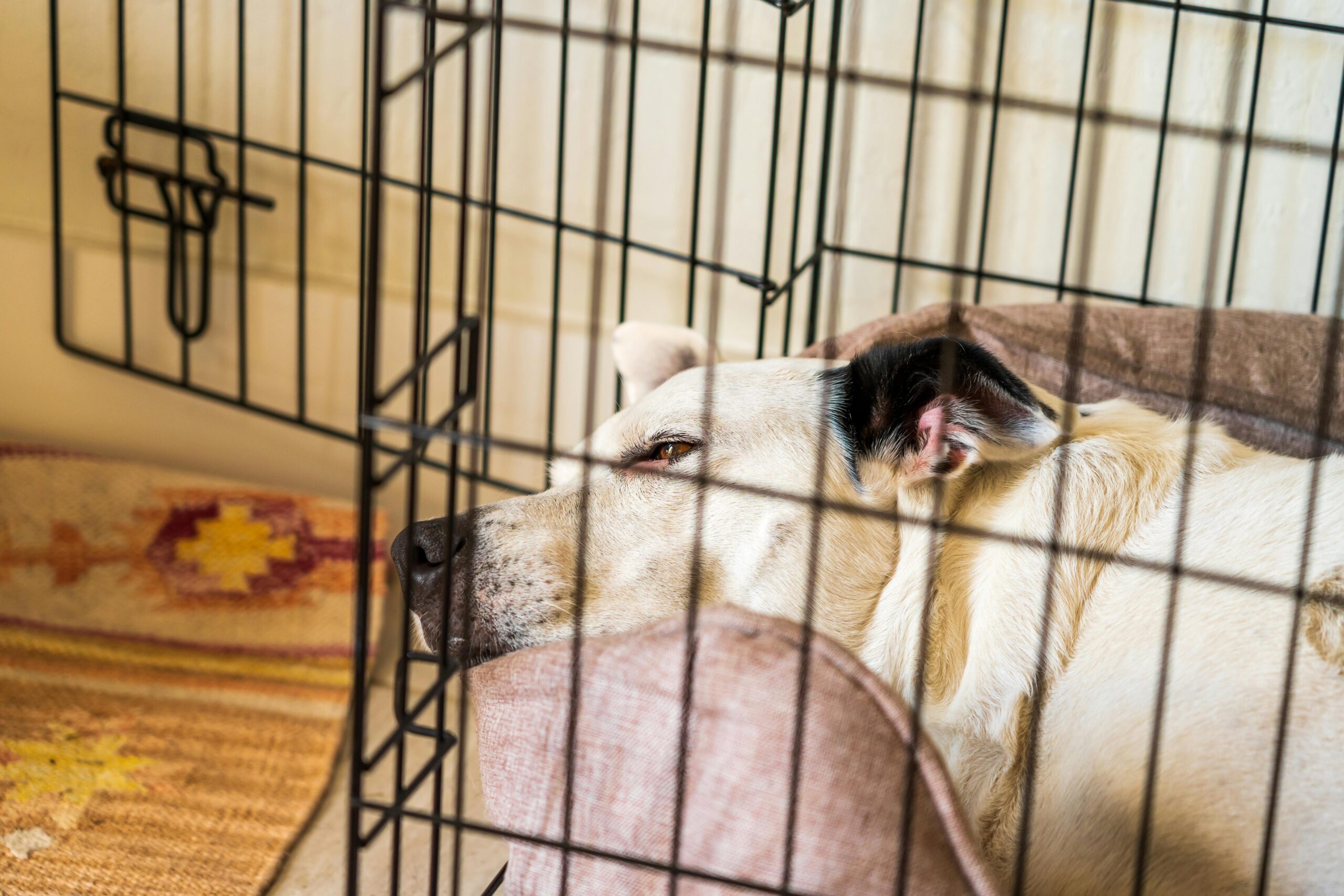| Summary: Placing a dog bed in a crate depends on your dog’s behavior. If they’re house-trained and don’t chew excessively, a bed provides comfort and support. However, puppies, chewers, or dogs prone to accidents may do better with a durable mat. Choose based on your dog’s habits for safety and comfort. |
Placing a dog bed inside a crate is a decision that many pet owners struggle with. On one hand, a comfortable bed can provide cushioning, warmth, and support, making the crate a cozy and inviting place for your dog. So, should you put dog bed in crate?
On the other hand, some dogs may chew or destroy their bedding, while others may have accidents that make keeping a bed in the crate difficult. This raises the question—should you put a bed in your dog’s crate, or are there better alternatives?
For a comprehensive guide on What is the best type of harness for a Pomeranian?, including comfort and safety tips, check out this article.
The answer depends on several factors, including your dog’s age, behavior, chewing tendencies, and house-training progress. While a well-trained adult dog will likely benefit from a soft bed, a teething puppy or an aggressive chewer might tear up the bedding, creating a mess or even a choking hazard. Understanding the pros and cons of adding a bed to a crate will help you make the best choice for your furry friend.
Blog Highlights
ToggleFAQs: Should You Put Dog Bed in Crate?
Should You Put Dog Bed in Crate?
A dog crate is often seen as a secure place where a dog can rest, sleep, and feel safe. Whether or not you should place a bed inside the crate depends on how your dog behaves in enclosed spaces. Some dogs love soft bedding and sleep better when they have a plush surface to rest on, while others prefer lying directly on the crate floor.
Discover if the The American Eskimo makes a great guard dog and learn about its suitability for protecting your home.
The key to making the right decision is observing your dog’s habits. If your dog is fully house-trained and doesn’t chew excessively, adding a bed can make the crate feel more like a personal den. However, if your dog has a habit of shredding things or is still learning to control their bladder, a bed may not be the best choice just yet.
Benefits of Putting a Dog Bed in a Crate
1. Comfort & Joint Support
Dogs, just like humans, need a comfortable place to rest. A soft bed inside the crate can provide extra cushioning for their joints, which is particularly important for older dogs or those with arthritis. Sleeping on a hard surface for extended periods can cause discomfort, leading to stiff joints and sore muscles.
A bed helps by distributing your dog’s weight evenly and reducing pressure on their elbows, hips, and spine. This ensures they wake up feeling well-rested rather than stiff or achy. If your dog spends several hours in their crate each day, adding a comfortable bed can greatly improve their overall well-being.
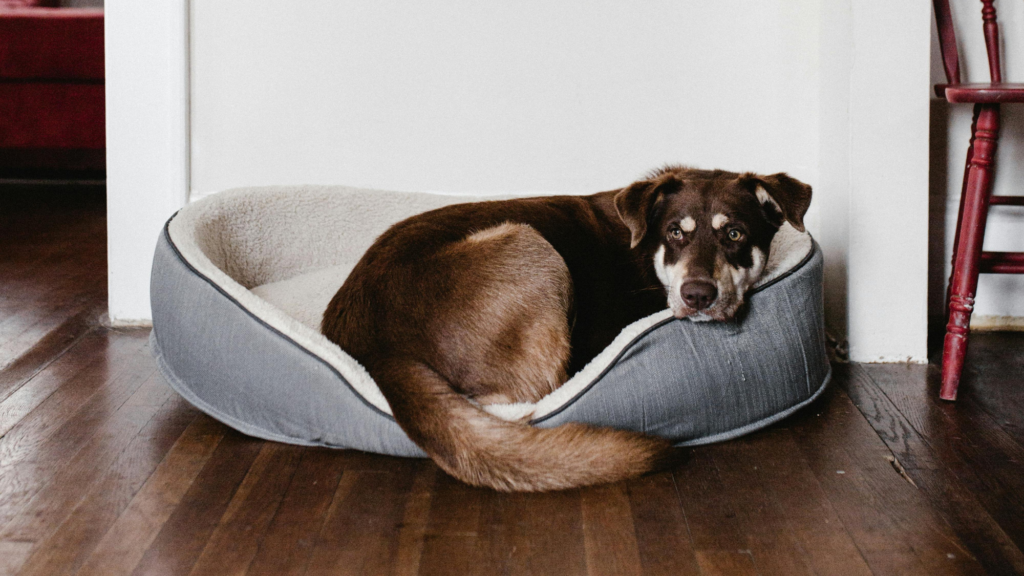
2. Temperature Regulation
The right type of bedding can help regulate your dog’s body temperature. During colder months, a plush or insulated bed can keep your dog warm and prevent them from getting chilled. This is especially important for breeds with short fur, such as Greyhounds or Chihuahuas, which do not retain body heat as well as fluffier breeds.
In warmer weather, a breathable or cooling bed can prevent overheating. Some dogs naturally run hot and may struggle with thick bedding, so a thinner, ventilated mat may be a better option. Choosing the right material based on the climate and your dog’s needs ensures they stay comfortable year-round.
3. Creates a Positive Crate Experience
Some dogs initially resist crate training because they associate the crate with restriction rather than comfort. By adding a cozy bed and a few familiar toys, you can make the crate feel like a welcoming and positive space rather than a place of confinement.
Over time, your dog will begin to associate the crate with relaxation and security. A well-cushioned crate setup can even help reduce anxiety, making it easier for your dog to settle down, whether you’re leaving them home alone or using the crate for travel.
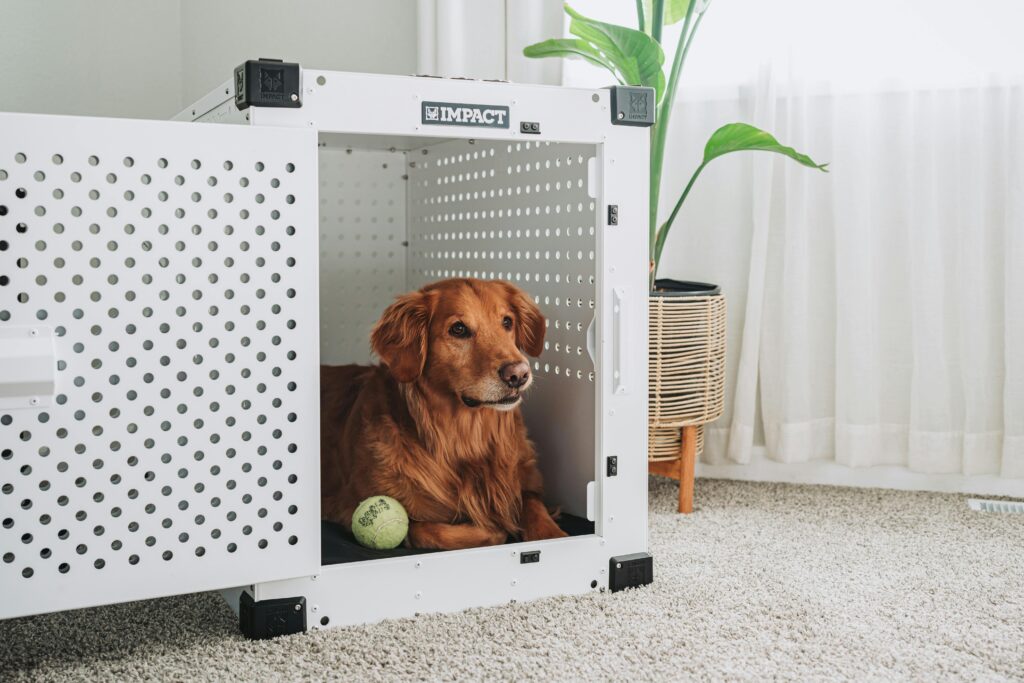
4. Encourages Better Sleep
Dogs need restful sleep to stay healthy and active. A hard crate floor may not provide the level of comfort needed for a good night’s rest, leading to frequent waking and restlessness. A soft bed helps your dog relax more deeply, promoting better quality sleep.
This is especially beneficial for puppies and rescue dogs adjusting to a new environment. If a dog feels safe and comfortable in their crate, they are less likely to whine, bark, or pace at night. Creating a warm and inviting sleeping area can make a big difference in their overall comfort.
5. Prevents Pressure Sores & Calluses
Hard surfaces can be rough on a dog’s skin, leading to pressure sores and calluses, particularly in large breeds that are prone to joint issues. Repeatedly lying on a crate floor can cause irritation and thickening of the skin, which may require medical attention over time.
A well-padded bed can act as a barrier, protecting your dog’s skin from these problems. This is especially crucial for dogs that spend several hours in their crate daily. Investing in a good-quality, orthopedic bed can help prevent long-term health issues related to hard sleeping surfaces. Learn about the size collar for an American Eskimo to ensure a perfect fit and comfort for your dog.
Potential Downsides of Putting a Dog Bed in a Crate
1. Risk of Chewing & Destruction
One of the biggest concerns with placing a bed in a crate is the possibility of chewing and tearing. Some dogs, particularly puppies or aggressive chewers, may see their bed as a fun object to shred. This can quickly lead to a mess, with foam or stuffing spread throughout the crate.
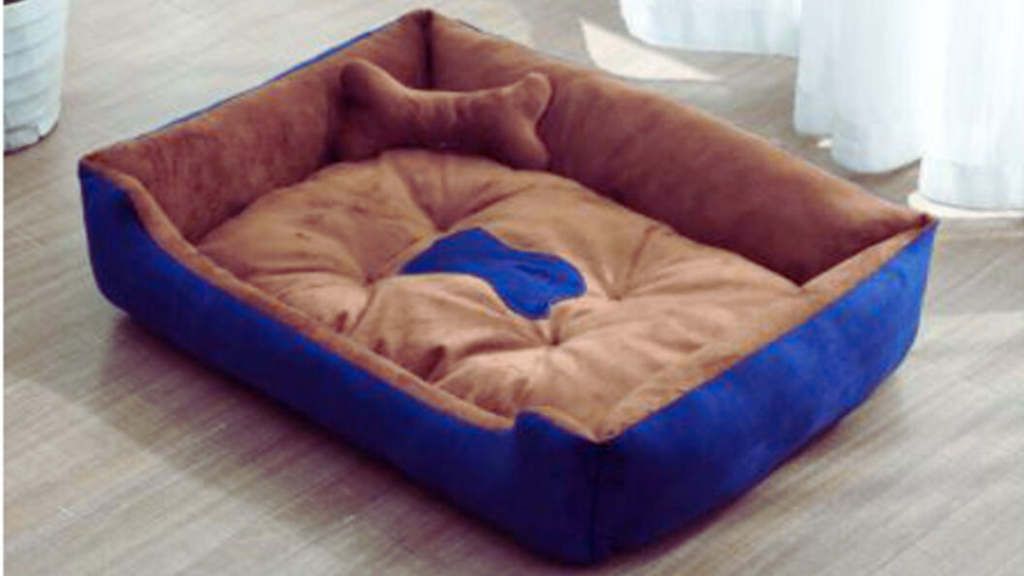
Beyond creating a mess, chewing on bedding can be dangerous. If your dog ingests fabric or stuffing, it can cause digestive blockages or other health issues. If your dog has a history of destructive chewing, it may be safer to start with a durable, chew-resistant mat instead of a plush bed.
2. Risk of Accidents (Especially for Puppies)
For puppies or untrained dogs, accidents in the crate are common. If a dog urinates on their bed, the fabric can absorb the moisture, creating an unpleasant smell and increasing the difficulty of cleaning. Some dogs may even get used to relieving themselves in their crate, making house training more challenging.
To prevent this, it’s best to wait until your dog is fully house-trained before introducing a bed to their crate. In the meantime, a waterproof mat or easily washable bedding can serve as a temporary solution until your dog is ready for a full bed.
3. Some Dogs Prefer Hard Surfaces
Not all dogs enjoy soft bedding. Some breeds, especially those with thick coats, prefer cooler, harder surfaces and may push bedding aside to sleep directly on the crate floor. If your dog constantly moves their bed out of the way, it might be best to offer a thin, breathable crate mat instead of a plush bed.
Pay attention to how your dog behaves in the crate. If they seem more comfortable without bedding, forcing a bed into the space may not be necessary. Every dog has unique preferences, and some simply enjoy resting on a firm surface.
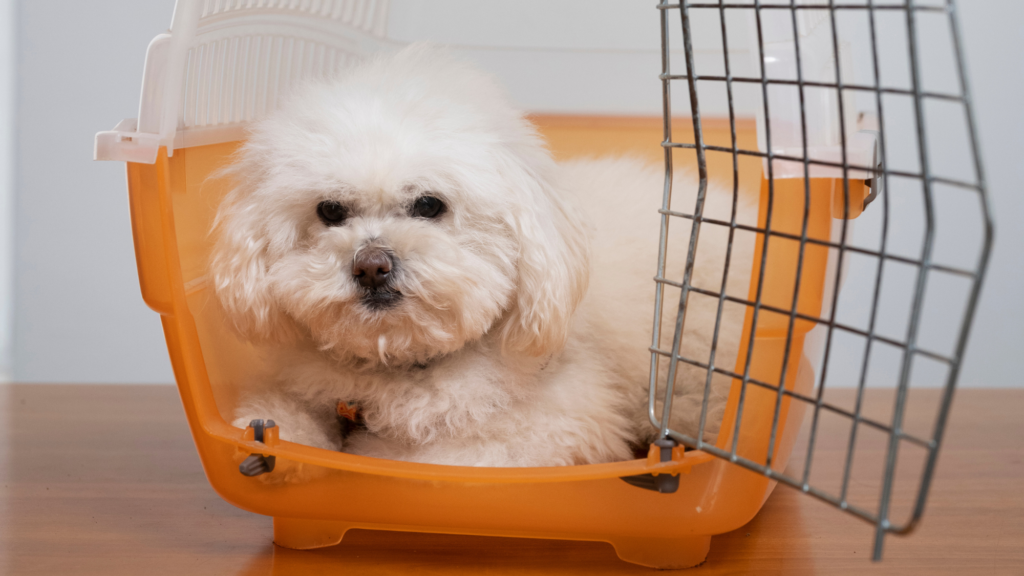
4. Bed May Take Up Too Much Space
Crates should provide enough room for a dog to stand, turn around, and lie down comfortably. If the bed is too bulky, it may take up valuable space, making it harder for your dog to move freely. This can lead to discomfort, especially for larger dogs in smaller crates.
When choosing a bed, make sure it fits properly within the crate without making the space feel cramped. A well-fitted crate bed should provide comfort while still allowing your dog to shift positions easily.
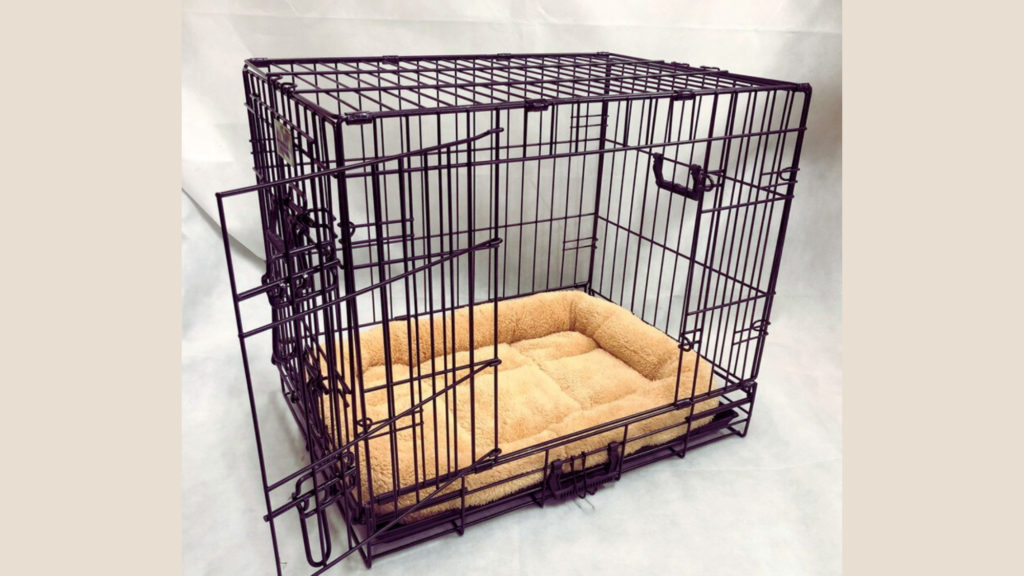
Discover why Afghan Hound collars are wide by exploring the unique characteristics of this breed and how wide collars enhance their comfort and style.
Final Verdict: Should You Put Dog Bed in Crate?
Ultimately, whether or not to put a dog bed in a crate depends on your dog’s needs and habits. If your dog is well-trained, enjoys soft bedding, and does not chew excessively, a bed can make their crate more inviting. For insights on whether Pomeranians should wear a collar, including considerations for safety and alternatives, check out this informative article.
However, for puppies, heavy chewers, or dogs prone to accidents, a chew-resistant, waterproof mat might be a better alternative. The best approach is to observe your dog’s behavior and adjust accordingly, ensuring their crate remains both comfortable and safe. Hope so, now you know, should you put dog bed in crate.

